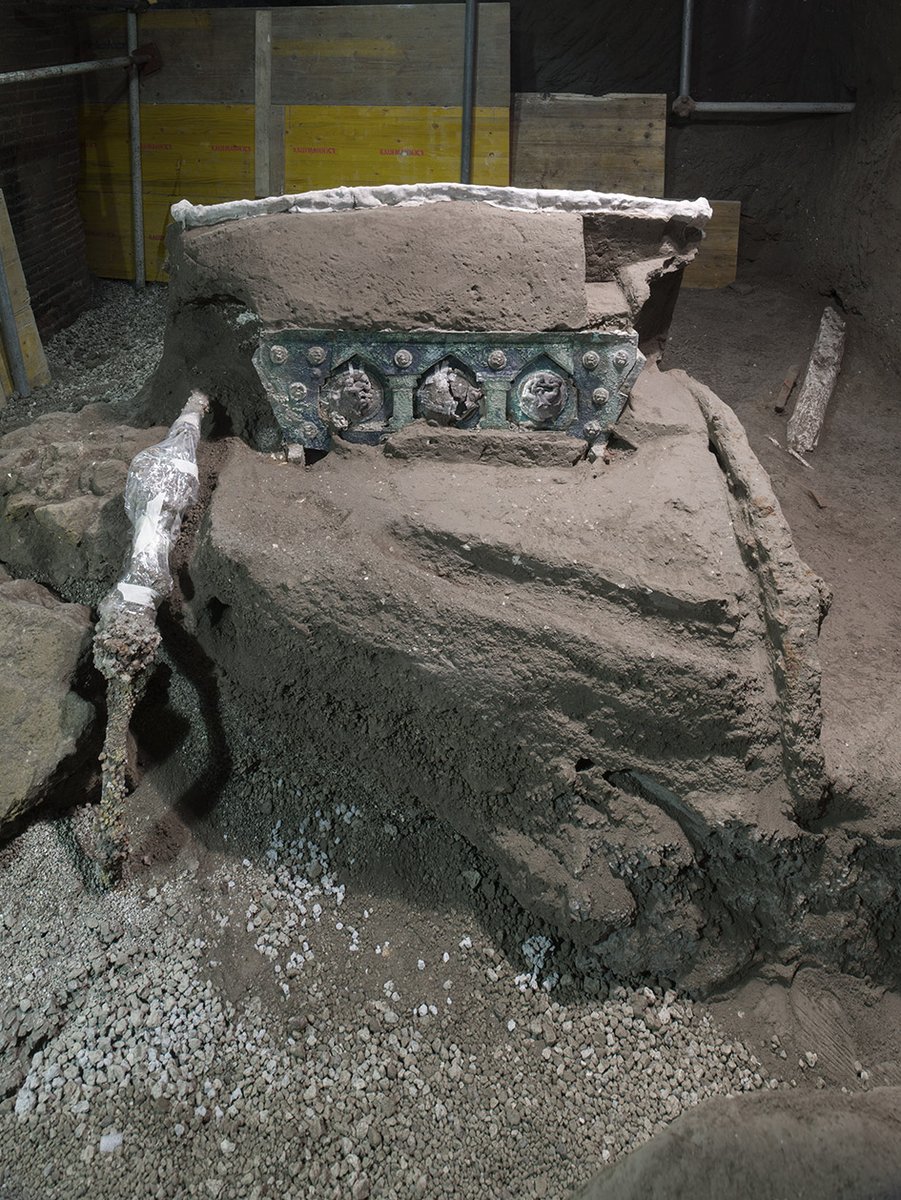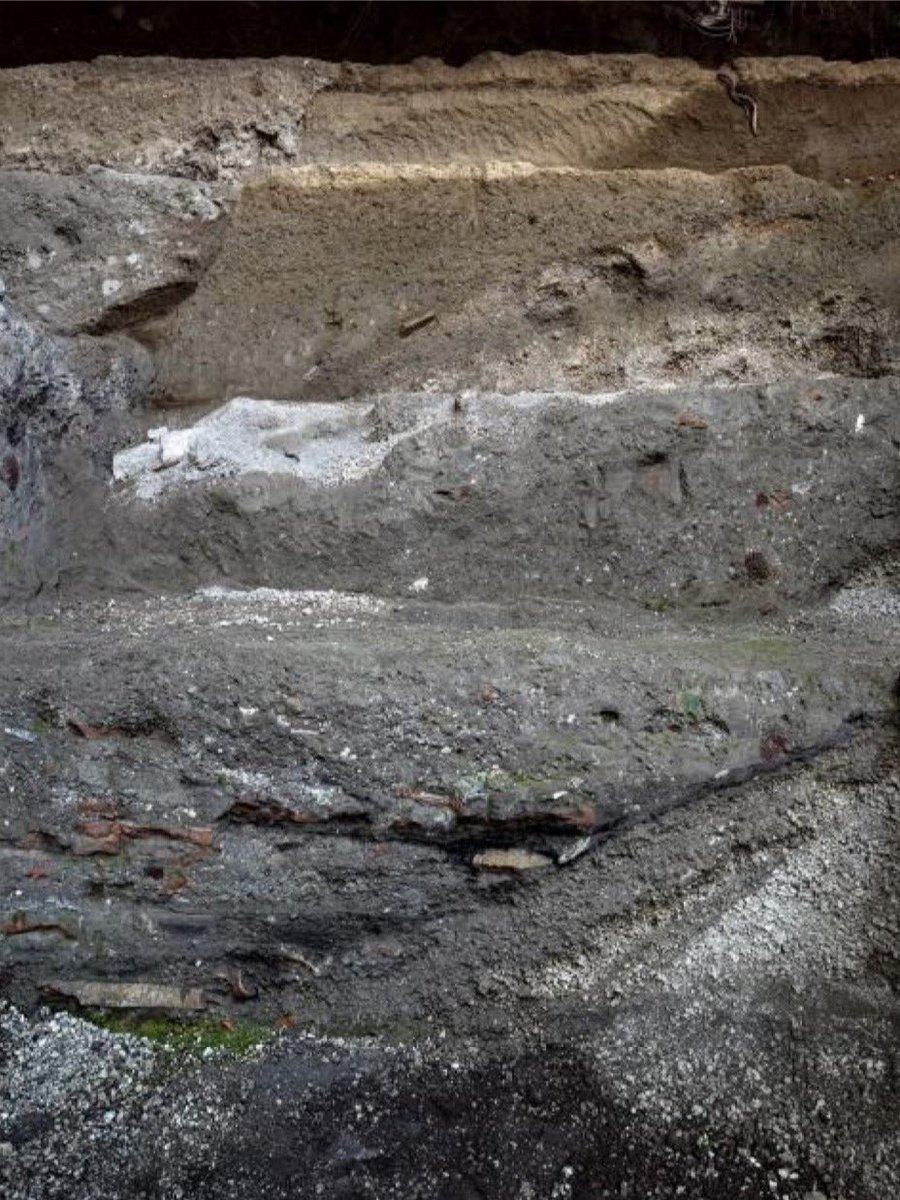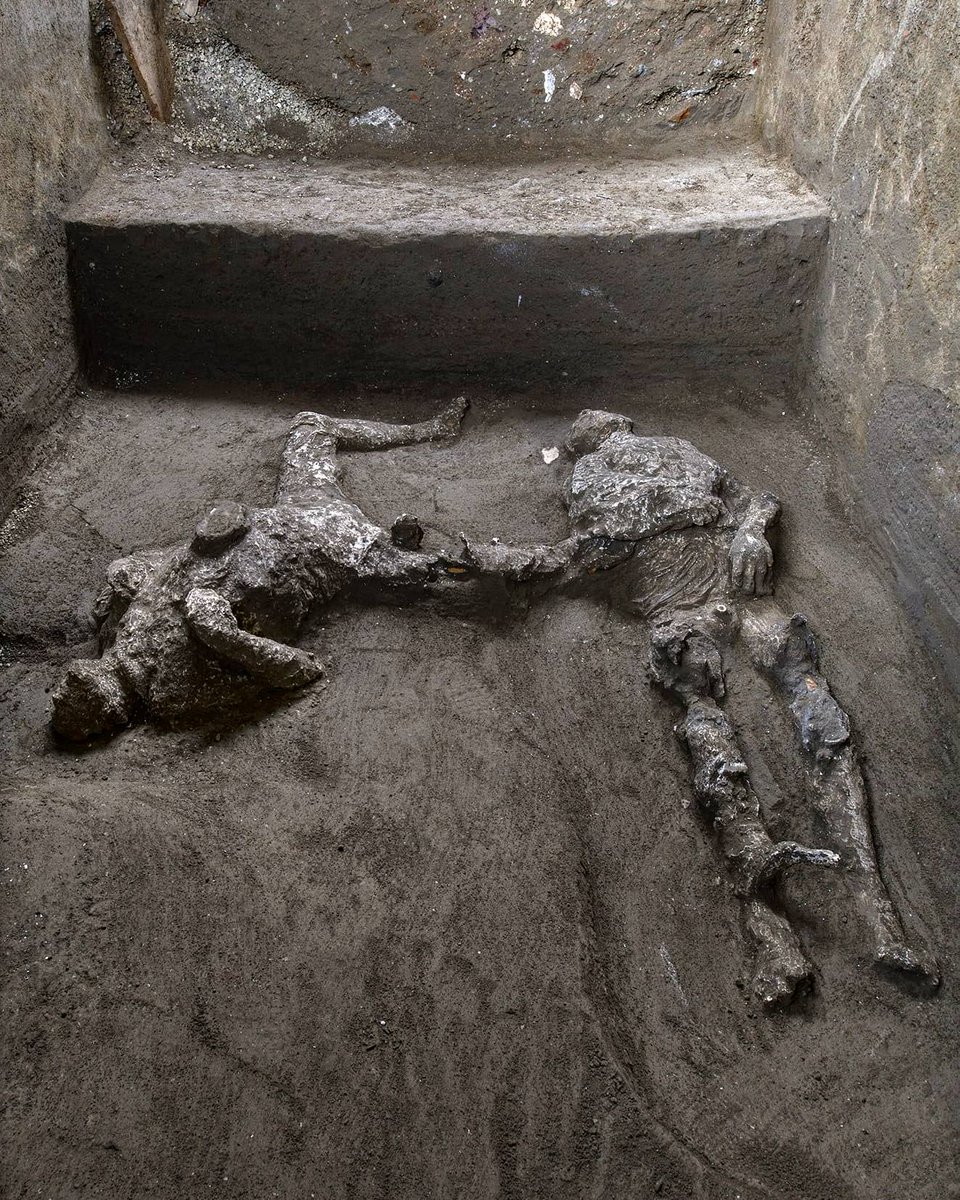
The four-wheeled processional chariot. The last discovery of #Pompeii.⤵️
pompeiisites.org/en/comunicati/…
Ph. Luigi Spina📷



pompeiisites.org/en/comunicati/…
Ph. Luigi Spina📷




The Archaeological Park of Pompeii and the Public Prosecutor’s Office of Torre Annunziata announce the discovery of an extraordinary find, emerged intact from the excavation of the suburban villa of Civita Giuliana, beyond the walls to the north of the ancient city of Pompeii. 



It is a part of the joint operations launched in 2017 and in accordance with the Memorandum of Understanding signed in 2019, which sought to combat illegal activities which had been conducted in the area. 





A ceremonial chariot with four wheels, with its iron components, bronze and tin decorations,mineralised wood remains and imprints of organic materials, has been discovered almost intact in the portico facing the stable where,in 2018,the remains of 3 equidae had already been found 







This is an exceptional discovery, not only because it adds an additional element to the history of this dwelling and the story of the last moments of those who lived in it, but above all because it represents a unique find in an excellent state of preservation. 







• • •
Missing some Tweet in this thread? You can try to
force a refresh
































